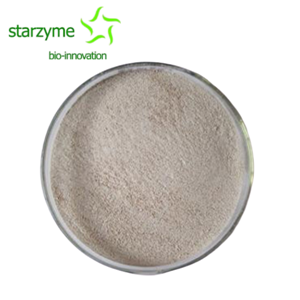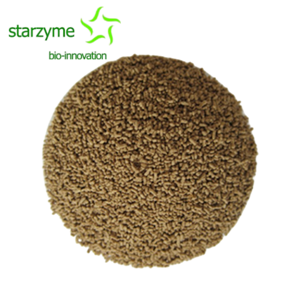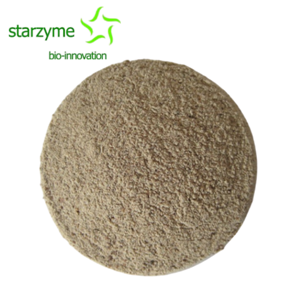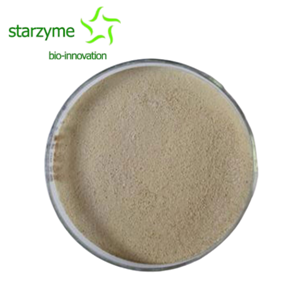The Use of Phytase in Animal Feed (Part 1)
Basic introduction of Phytase
Phytase, is an enzyme that can catalyze the hydrolysis of phytic acid and its salts, thereby releasing inositol and phosphate (salts). As a phosphate monoester hydrolase, it has a unique spatial structure and is a key factor in improving feed nutritional efficiency. Phytic acid, also known as inositol hexaphosphate, is a widely present phosphate reservoir in plants. However, minerals often bind to protein phytic acid mineral element complexes, reducing the nutritional value of minerals in certain plant-based foods and plant protein isolates. At this point, Phytase comes into play as it can hydrolyze the binding of phosphate residues with phytic acid, thereby weakening the strong affinity of phytic acid for mineral elements. In this way, the nutritional value of mineral elements is enhanced, and the released Ca ²+can also participate in cross-linking or other chemical reactions, further improving the texture of plant-based foods.
Definition and function of phytase
Phytase can hydrolyze the binding of phosphate residues and phytic acid, releasing Ca ²+and enhancing the nutritional value of mineral elements.
Source and classification of phytase
Phytase, an extracellular enzyme widely present in nature, can be found in animals, plants, and microorganisms. Phytase is present in plant tissues such as grains, beans, vegetables, and even germinated seeds and pollen. Meanwhile, many types of microorganisms, such as bacteria, molds, and fungi, can also produce Phytase. In a broad sense, enzymes related to phytic acid decomposition are collectively referred to as Phytases, which include Phytases and phosphatases. But in a narrow sense, Phytase specifically refers to inositol hexaphosphate hydrolase, whose function is to catalyze the removal of phosphate groups from inositol hexaphosphate (salt or vinegar). There are currently three types of known Phytases: inositol hexaphosphate 3-phosphate hydrolase, inositol hexaphosphate 6-phosphate hydrolase, and non-specific orthophosphate monoester hydrolase, which hydrolyze phosphate groups at different carbon positions of inositol hexaphosphate. It should be noted that the broad definition of Phytase does not include phosphatase.
Phytase is widely present in nature, can improve feed utilization efficiency, and has different classifications.
The role of Phytase in feed
Improve phosphorus utilization and mineral absorption
Phytase can release phosphate by decomposing phytic acid, theoretically producing 281.6 mg of phosphorus per gram of phytic acid. Numerous studies have shown that adding Phytase to pig feed can significantly improve phosphorus utilization efficiency. For example, adding Phytase to the feed of young pigs can significantly enhance their absorption of phosphorus, thereby promoting healthy bone growth. Similarly, adding Phytase to the feed of growing and fattening pigs not only improves phosphorus utilization but also alleviates certain phosphorus deficiency symptoms. Therefore, by using Phytase, we can ensure that pigs receive sufficient phosphorus to maintain their strong bones.
Phytase can release divalent cations, proteins, and amino acids bound to phytic acid by hydrolyzing phytic acid, thereby eliminating phytic acid's resistance to nutrients and improving the digestibility of these key nutrients in monogastric animals. Research has shown that phytic acid can form stable complexes with charged minerals such as calcium, zinc, copper, iron, manganese, and magnesium, reducing their availability. However, by adding Phytase, not only does it enhance the metabolism and utilization of phosphorus, but it also significantly increases the absorption rate of other mineral elements.
Phytase improves the utilization of phosphorus and other trace elements by decomposing phytic acid.
Improving the production performance and environmental benefits of livestock and poultry
After adding Phytase to the diet, the production performance of livestock and poultry was significantly improved. After multiple experimental verifications, the diet supplemented with Phytase showed significant improvements in daily weight gain and feed consumption, while the feed conversion rate remained stable or changed little. Taking the corn soybean meal diet as an example, the Phytase content in the diet without phytase was less than 60U/kg, while the average content in the diet with Phytase added increased to 1535U/kg. The phytic acid content in all experimental diets was 0.87%. Through actual breeding experiments, we found that the addition of Phytase effectively improved the weight gain of growing pigs (P<0.01), with an average daily weight gain increase of 21.62%~68.31% compared to without the addition, and a feed return increase of 10.11%~58.60%.
The use of Phytase significantly improves the production performance of livestock and poultry, and reduces environmental pollution.




